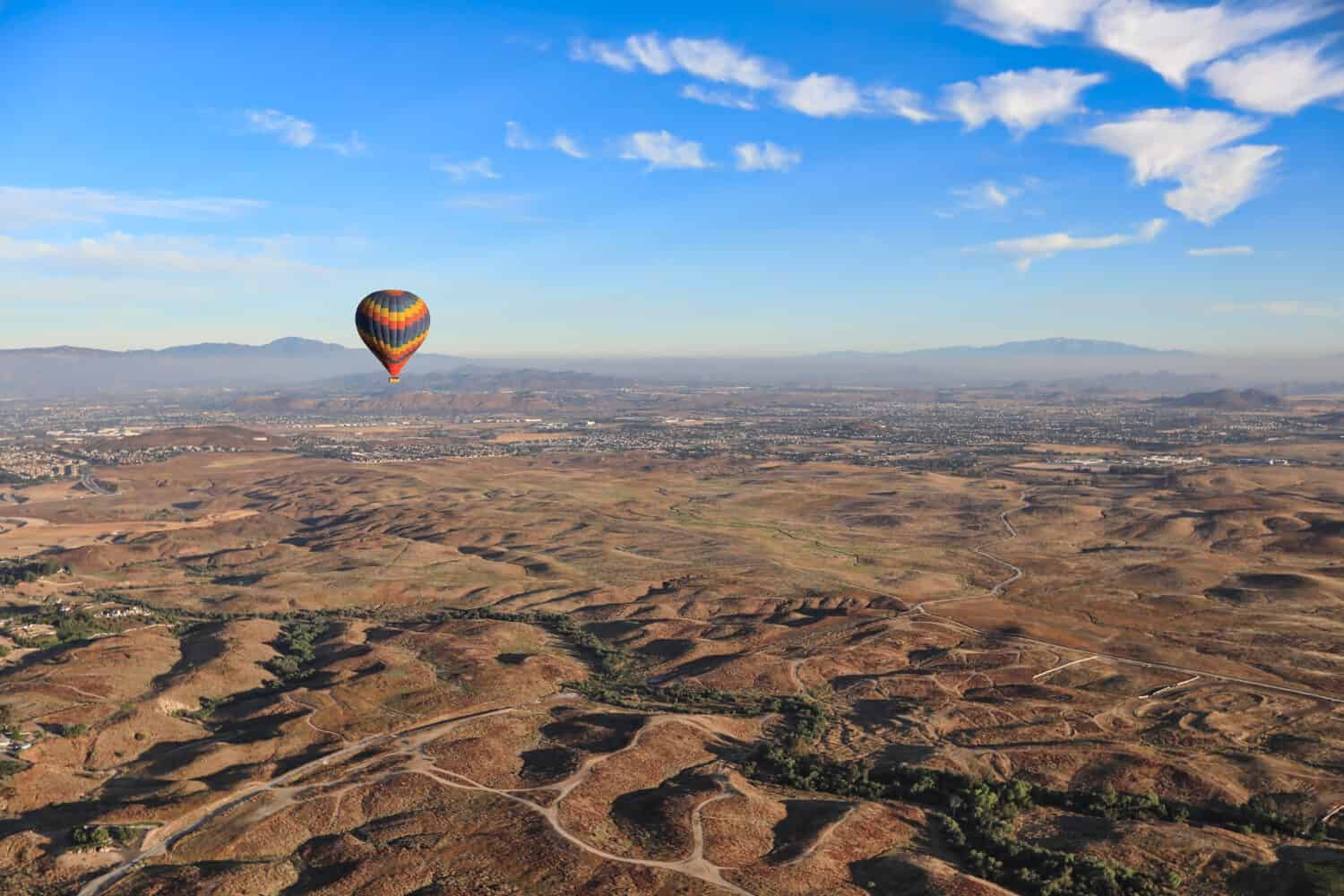Did you know that there are dozens of national landmarks in California? Yosemite National Park, San Diego Mission Church, and the Golden Gate Bridge are just a few. What else does the Golden State have to offer?
A national historical landmark can be anything from a place, a building, or a monument. While we won’t be going over all of the ones in California, here are some of the most unique ones that may be worth a visit!
1. Alcatraz Island
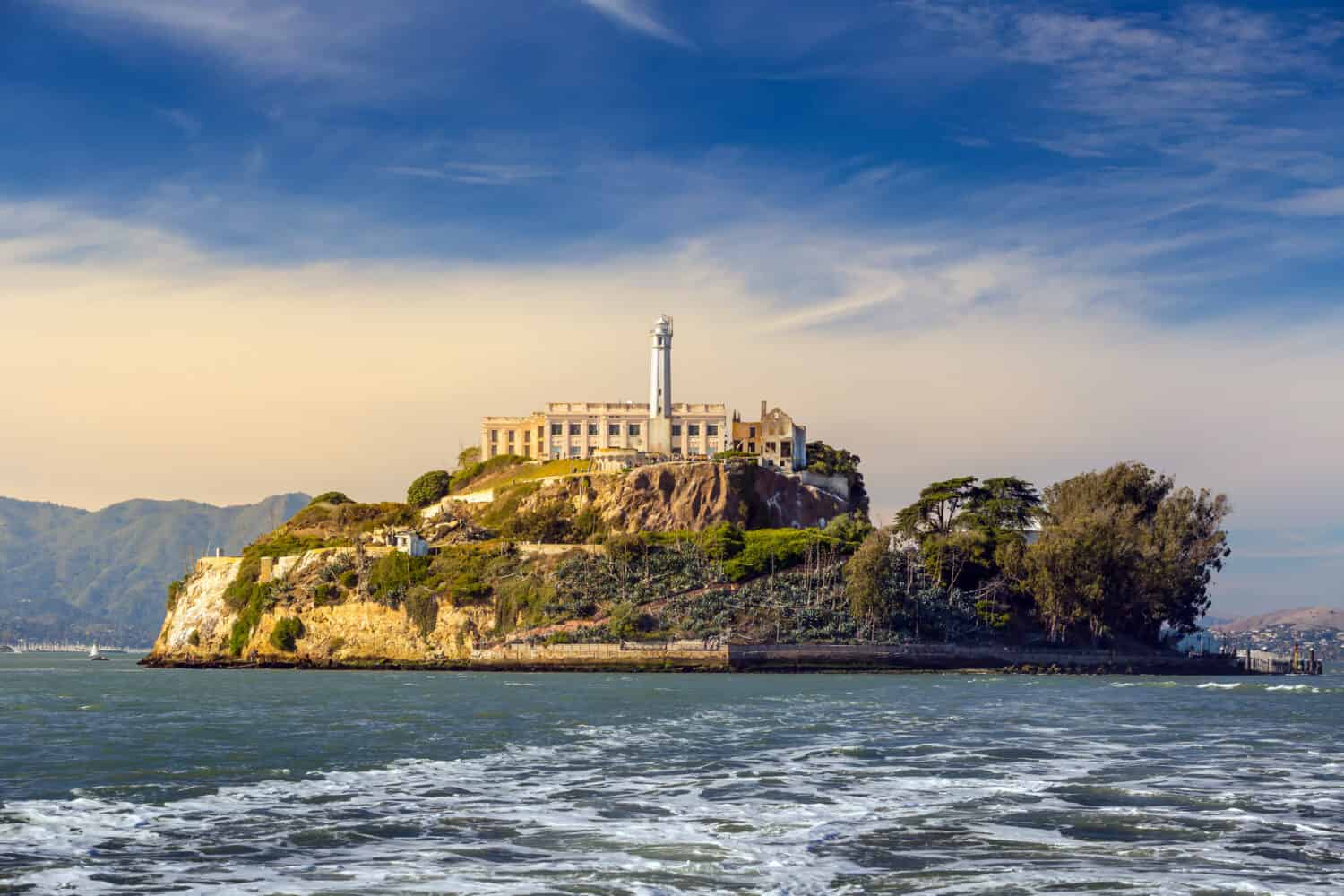
Al Capone played the banjo at Alcatraz.
©f11photo/Shutterstock.com
San Francisco Bay’s icy waters, which are home to many sharks, encircle the isolated island of Alcatraz. Approximately 1,500 prisoners resided in this institution throughout its 29-year tenure as a penitentiary.
In 1976, Alcatraz became a part of the National Register of Historic Places. Detainees who weren’t acting properly in various California jails, particularly those who were reputed escape artists, were sent to Alcatraz.
Al Capone, the original Machine Gun Kelly, Arthur Barker, and Frank Morris are some well-known individuals who served their prison terms in Alcatraz. Alcatraz was subsequently assigned to the National Park Service because running it as a jail would have been too expensive.
Visitors may now go on informative tours of the prison, see the cramped cells up close, and discover the fascinating past of this unique location.
2. Balboa Park

Balboa Park consists of 1,200 acres!
©hey_yu2/Shutterstock.com
In 1977, Balboa Park became a National Landmark. Imagine taking Central Park and doubling it in size. This area in San Diego has just about everything you can imagine. The San Diego Zoo, museums, performing arts centers, the Morley Field Sports Complex, and parks are all located there.
Tourists from all over the world visit the park, but locals also adore and frequently visit it.
The fact that the park served as the venue for the 1915 Panama-California Exposition greatly influenced its architecture and design.
Another intriguing fact regarding the history of this park is that in both World Wars, Balboa Park had bunkers and training facilities.
3. Bradbury Building

Some iron railings are over 35 feet tall in the Bradbury Building.
©Barbara Barbour/Shutterstock.com
A location in downtown Los Angeles that many photograph is the Bradbury Building. It is still magnificent after over a century thanks to its enchanted light-filled Victorian court, exposed box elevators, marble steps, and beautiful iron rails.
There is controversy over who the building’s original architect was. Lewis Bradbury, a miner, developer, and millionaire, hired Sumner Hunt, a designer. The main goal was to create a luxurious building that stood out among the rest.
The Bradbury Building constitutes one of Los Angeles’ special gems and the longest-standing commercial structure in the heart of the city. The structure was listed on the National Register of Historic Places in 1971 and was given the designation of National Historic Landmark in 1977.
4. Elmshaven

Elmshaven will instantly transport you back in time.
©Gorodenkoff/Shutterstock.com
Robert H. Pratt, a railway developer and executive, erected a majestic countryside Queen Anne home in 1885. The Pratt family used it as a holiday home until it became Elmshaven in 1900.
Seventh-day Adventist Church co-founder Ellen G. White bought the house in 1900, and she resided there until her passing in 1915. Visitors of the house, now a museum, can take in Elmshaven’s serene atmosphere, whether they have a passion for design, vintage items, church history, or simply wish to observe how certain individuals lived a century ago.
As an Adventist historical property, it is currently owned and administered by the Seventh-day Adventist Church and was recognized as a National Historic Landmark in 1993.
5. Larkin House
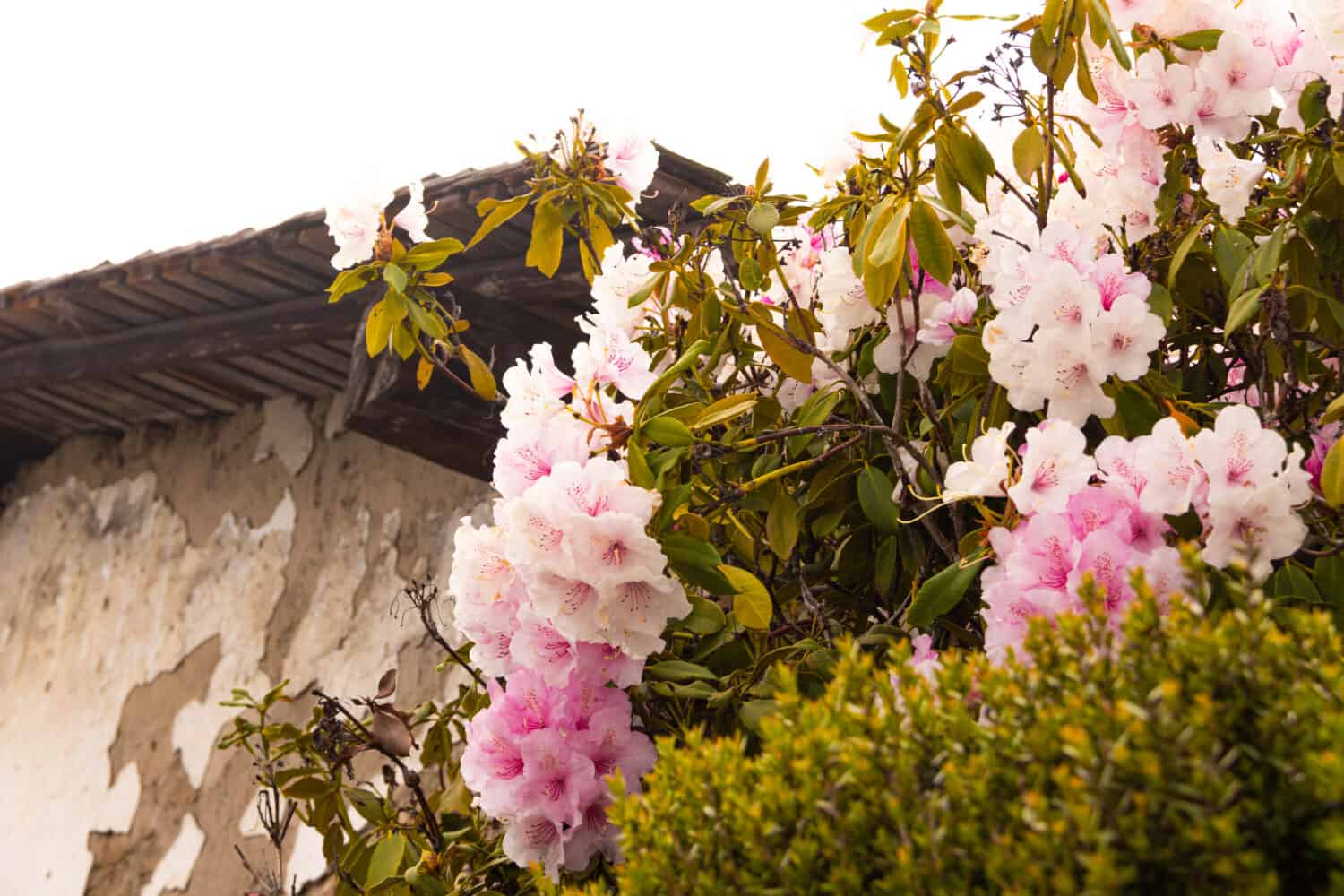
Pink flowers decorate this area of Monterey.
©Anne M Vallone/Shutterstock.com
Decisions that molded the beginnings of the State of California were decided on and carried out in the Larking House. This illustrious adobe serves as an example of the impact Thomas Oliver Larkin had on secular building techniques in California throughout the first part of the 19th century, in addition to its political past.
One of the oldest versions of Monterey colonial design as well as one of the first two-story buildings to be erected in Monterey were both built by Larkin in 1834. The Larkin House’s adobe is recognizable by its exterior balcony and its wide roof overhang over the windows on the upper level.
The roof established the standard design for adobe houses of the time. This is because it was both aesthetically pleasing and functionally effective in protecting the adobe from the damaging forces of the elements.
6. Little Tokyo Historic District
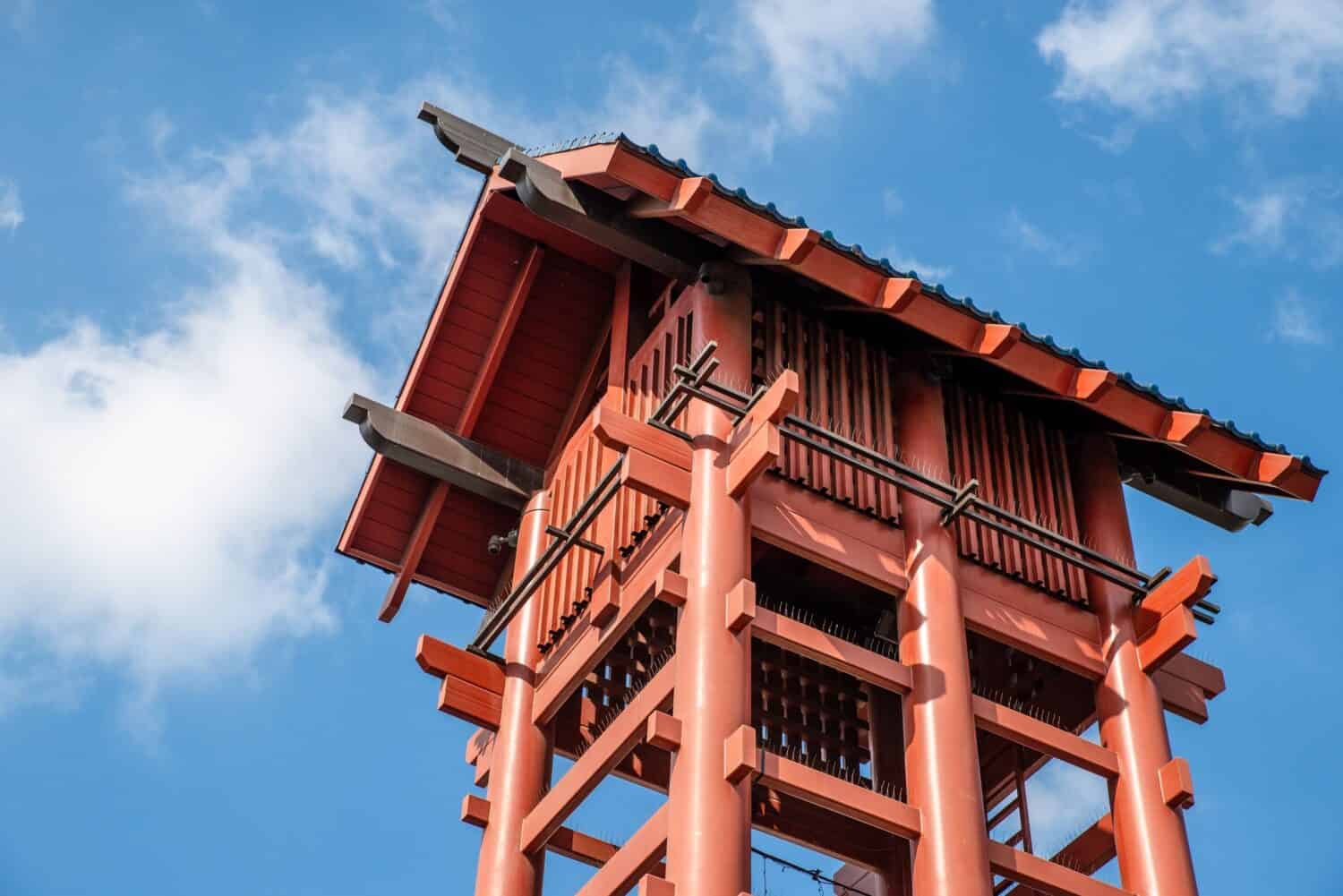
There are roughly 40,000 people living in Little Tokyo today.
©Wirestock Creators/Shutterstock.com
Downtown Los Angeles is home to the Little Tokyo Historic District, a former Japanese business area. Japanese laborers were highly in demand by American enterprises in the late 1800s, which led to a sharp rise in the number of Japanese immigrants to the US, notably on the West Coast.
Little Tokyo’s splendor came to a halt in 1941 when Japan bombed Pearl Harbor. In the 1970s, Little Tokyo began to see a comeback. As Japanese enterprises extended their international operations and created offices in California, Japanese businesses started to press for broader reconstruction of the Little Tokyo neighborhood.
There are many Japanese Americans living in the region today. They operate and patronize the area’s classic sushi shops, streetwear stands, unique ice cream shops, manga hotspots, and other businesses. This is one of L.A.’s thriving, mouthwatering, and explorable neighborhoods.
7. Mission Beach Roller Coaster

A ticket to Belmont Park is $56 per day.
©Lowe Llaguno/Shutterstock.com
Did you know that the first roller coasters built were made of wood? Sounds perfectly safe, right? In the heart of Mission Beach, there’s a small amusement park called Belmont Park. Here is where you’ll find the Giant Dipper Roller Coaster.
The Prior and Church Company constructed the Giant Dipper in 1925, at the height of the popularity of wooden roller coasters. The early 1930s saw the park’s height in appeal. The amusement park and coaster experienced their fair share of economic ups and downs in the decades that followed.
In fact, the whole park shut down in 1976.
The roller coaster at Belmont Park was restored and run by the San Diego Coaster Company. This was established in 1990 and negotiated a contract with the city of San Diego. Its restoration cost $2 million and required a three-year period of preparation and execution.
This old wooden roller coaster was renovated with a brand-new track and track bed. There are over 11,000 replacement bolts, lumber, and two brand-new trains with current restraint systems. These are just a few of the modifications.
8. Paramount Theatre

Ballet and symphony are the most common forms of art performed at the Paramount Theatre.
©Kitreel/Shutterstock.com
The Paramount Theatre, an iconic landmark in Oakland since 1931, is hailed as one of the greatest Art Deco structures nationwide. However, opening a theater during the Great Depression became challenging due to the substantial operating expenses, and the Paramount shut down after being open for less than a year.
The theater reopened in 1933 and stayed afloat by showing movies. During this time, the theater also put on talent performances, game nights, and sponsored festivities. Apart from the rare showing of a classic movie, the Paramount is now a performing arts center with resident organizations such as the Oakland Ballet.
There have been occasional big names to play at the Paramount, including Bruce Springsteen and comedian Chris Rock!
9. Rogers Dry Lake

You can sign up online for tours of the Edwards Air Force Base.
©vaalaa/Shutterstock.com
The United States military has been using Rogers Dry Lake at Edwards Air Force Base in the Mojave Desert for 90 years! It all started when a Riverside party from March Field built a bombing range at Rogers Dry Lake.
The Rogers Dry Lake is an environmental asset, but it is suggested for listing as a National Historic Landmark due to its connection to the flight evaluation of sophisticated airplanes that paved the route for space travel.
Aircraft that were at the pinnacle of aviation and aeronautical technology could be tested in a natural environment thanks to the dry lakebed’s huge surface area, clean air, remote location, good weather, and closeness to varied topography.
10. Yosemite National Park
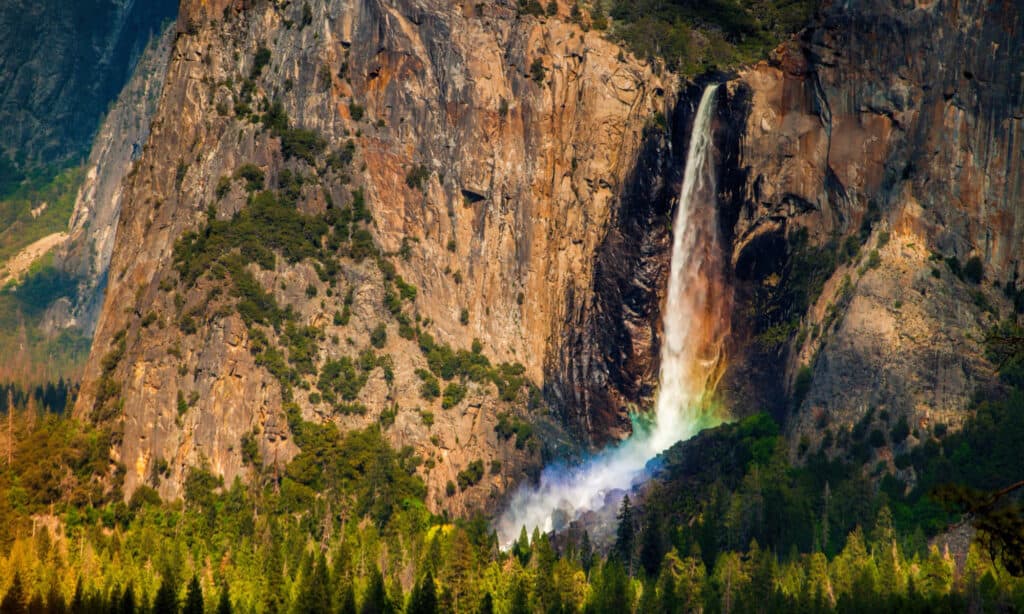
There are dozens of waterfalls within Yosemite.
©Andrew S/Shutterstock.com
Yosemite National Park, which is situated in central California, attracts millions of tourists every year. The park is nearly 750,000 acres, of which 95% is wilderness. Yosemite is a place where history was made because it was our country’s first recreational area.
Without Yosemite, there wouldn’t be any national parks in the United States because it served as the model for all subsequent national parks. Yosemite National Park has a wide range of attractions and activities.
Consider the actual scope of what we are able to accomplish to preserve these unique locations as you stand amid the breathtaking landscape.
Summary of the Historic Landmarks in California
| Historic Landmark | Location |
|---|---|
| Alcatraz Island | San Francisco |
| Balboa Park | San Diego |
| Bradbury Building | Los Angeles |
| Elmshaven | St. Helena |
| Larkin House | Monterey |
| Little Tokyo Historic District | Los Angeles |
| Mission Beach Roller Coaster | San Diego |
| Paramount Theatre | Oakland |
| Rogers Dry Lake | Mojave Desert |
| Yosemite National Park | Yosemite Valley |
Thank you for reading! Have some feedback for us? Contact the AZ Animals editorial team.

